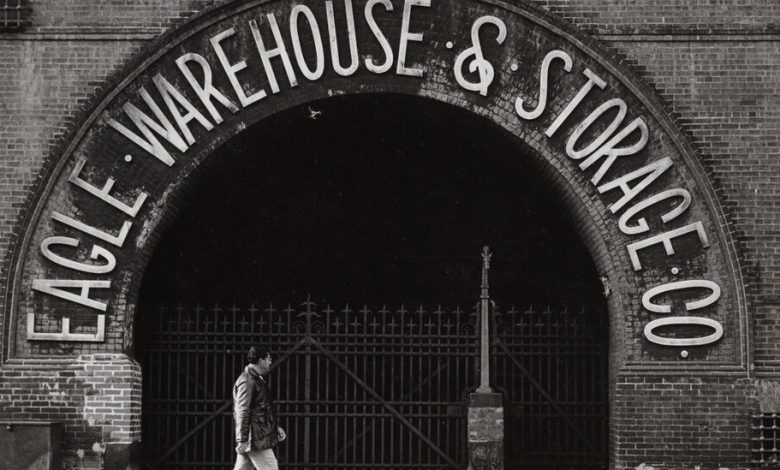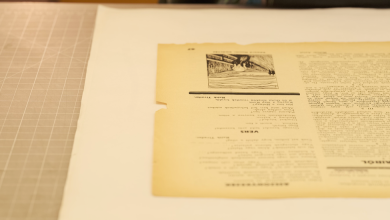Retracing Walt Whitman’s Steps Through Brooklyn and Manhattan

Walt Whitman resided in Brooklyn for more than 28 years, longer than he lived any other place. He was almost four when, in 1823, his family moved to the borough-to-be, which, with its dirt roads, outlying croplands and farm animals sniffing about, looked more like an overgrown village than a small city. It hardly seemed destined for a bright metropolitan future, and the same might have been said about the easygoing young man who would go on to change the face of American poetry. When Whitman’s former teacher B.B. Hallock learned of his pupil’s acclaim, he responded, “We need never be discouraged over anyone.”
The writer got his real education in journalism. In his teens, twenties and beyond, he wrote more than a thousand articles that run the gamut from an essay on opera to a piece encouraging young and eligible men to get married. He went to plays, he wandered, he chatted up people of all classes. If anything, Whitman preferred the stage-drivers, the longshoremen, the builders. These were the ones the city neglected, and he strove to represent them and others in his verse. “I am the poet of the woman the same as the man,” he wrote. In fact, Whitman saw “Leaves of Grass,” the poetry collection he first published (on his own dime) in 1855 and spent the rest of his days revising and expanding, as a great equalizer, a bridge between North and South and a place to sing not only of white folks but of Black Americans, too. His radical inclusivity has inspired poets from John Ashbery to June Jordan, and continues to shape literature to this day.
“Remember,” Whitman said, “the book arose out of my life in Brooklyn and New York.” With that in mind, it’s fun to imagine the poet, whom a character in Michael Cunningham’s novel “Specimen Days” (2005), which is something of an ode to the bard, calls “the last of the great ones,” prowling the city streets. Here, a list of some of the places that lent shape to book and life both.
The Fulton Ferry Landing

Brooklyn’s Fulton Ferry Terminal and, in the background, the Brooklyn Bridge under construction, circa 1880.Credit…Museum of the City of New York
Whitman first rode the Brooklyn ferry to Manhattan as a boy, when horses still powered some of the boats. The experience sparked in him a lifelong love of jaunts across the water. As an adult, he immortalized the East River passage in one of his most celebrated poems, “Crossing Brooklyn Ferry,” which first appeared in the second edition of “Leaves of Grass” (1856) under the title “Sun-Down Poem.” A praise song for a city in its adolescent phase, during which it morphed from agrarian village to global metropolis, the poem depicts Gotham from a remove. Whitman looks across the glittering harbor and speaks not of the hogs rooting in the trash heaps left to fester in the dust-choked streets of neighborhoods like Five Points, convulsed by poverty, disease and crime. Instead, rejecting the apathy that can seep into those struggling to get by in New York, he writes of a city united by shared waters and invites future generations to behold its splendor. His vision was prescient: In 1898, Brooklyn officially became part of New York City, and what the poet saw as two beacons of mankind were joined as one.
Fort Greene Park
Writing for the Brooklyn Daily Eagle in the mid-1840s, Whitman lobbied for the remnants of Fort Greene, used during the Revolutionary War, when it was known as Fort Putnam, to be made a public memorial and park. In the Battle of Brooklyn, outmanned and overmatched by the British, the American troops encamped at Fort Greene were forced to retreat. The fighting was personal for Whitman, as his great-uncle is thought to have died in the encounter, and what the British did after their victory stayed with him, too: In Wallabout Bay, they moored some sixteen rotting barges, on which around 11,500 American prisoners suffered and died. As a child playing on the sands of the bay, Whitman found some of their bones, swept in with the tides. Thanks in no small part to his efforts, the Prison Ship Martyrs’ Monument, a 149-foot-tall Doric column dedicated in 1908, crowns the crypt holding the prisoners’ remains in the center of Fort Greene Park.
Pfaff’s
This beer cellar at 689 Broadway, right off Bleecker Street, was in the mid-19th century a favorite watering hole for New York City creative types. The crew of regulars included the actresses Adah Isaacs Menken and Ada Clare, known for scandalizing the upper crust; Fitz Hugh Ludlow, the author of the autobiographical proto-druggie self-portrait “The Hasheesh Eater” (1857); the celebrated short-story writer Fitz-James O’Brien; and Henry Clapp Jr., editor of The Saturday Press and known to most in attendance as the King of Bohemia. Whitman, too, held court at Pfaff’s, where he’d sometimes rehearse one of his poems in progress. He read a draft of “Beat! Beat! Drums!,” written shortly after the disaster at Bull Run, the first full-scale battle of the Civil War, aloud here, though more often than not he simply let himself be swept up by the crowd. “My own greatest pleasure at Pfaff’s,” Whitman recounted, “was to look on — to see, talk little, absorb.” It’s been said that the bar was also a place for gay men of the era to cruise. Whitman wrote an unpublished poem about the oasis, “The Two Vaults,” an elegy for a way of life that perished, along with many of its practitioners, with the upheaval of the war — Menken, Clare, Ludlow, O’Brien and Clapp were all dead by 1875.
The Whitman Residence
In true New Yorker fashion, the Whitman clan moved many times within the city, particularly in the 1820s, when the family left Long Island to chase the Brooklyn housing boom. Their stay at a house at 99 Ryerson Street marked a happy spell for Whitman, at least as it related to his work. Despite the recession of 1854 and his father’s decline following a stroke, it was here that the 30-something put the finishing touches on the first edition of “Leaves of Grass.” Whitman, who’d worked as a printer’s apprentice, subsequently spent much of the spring of 1855 overseeing the print run at a hired Cranberry Street press, and even set the type for 10 of the book’s 95 pages himself. The fact that 99 Ryerson is the only New York City home of Whitman’s still standing speaks to the fires and real estate development that swept in waves through the city in those days.
Taylor’s Saloon
Taylor’s Saloon, which sat at the corner of Broadway and Franklin Street, was called by one magazine “the largest and most elegant restaurant in the world,” but Whitman might not have appreciated the venue or his dinner company when he went there with the reformist educator and Transcendentalist Bronson Alcott (father of Louisa May) in December 1856. Alcott, along with Henry David Thoreau, had visited the poet the month before. The “Walden” (1854) author remained mostly silent, seemingly wary of the man who sang with a “barbaric yawp” and what he might say or do. Alcott could at least hold a conversation with Whitman, and over dinner they discussed Ralph Waldo Emerson, whom they both admired, and politics. From one of the most rarefied settings in New York, Whitman denounced the political elite. It seems likely, then, that the gilded environs could have made him uneasy — he much preferred riding the Broadway omnibuses to fancy outings — and he would later dub his seatmate a “specialist” and a “department man.”
The Phrenological Cabinet
The New York publishing house Fowler and Wells distributed the first edition of “Leaves of Grass” and published the second. Founded by the brothers Lorenzo and Orson Fowler and their brother-in-law Samuel R. Wells, the firm specialized in scientific texts, which at the time included those pertaining to fad pseudosciences such as galvanism, phrenology and mesmerism. Essentially, these were early self-help books, their authors eager to stuff meaning into readers’ lives. Whitman ran a bookstore out of his home between 1849 to 1852 and sold a wide range of Fowler and Wells titles, and “Leaves of Grass” is peppered with ideas from these movements, such as the concept that the human body is sacred. The Phrenological Cabinet that the Fowlers assembled and operated at 286 Broadway’s Clinton Hall became a New York sensation. Inside were plaster casts of the skulls of murderers and celebrities. Whitman had his skull measured there by Lorenzo, and he liked the results so much he published them on four separate occasions. Despite or perhaps because of phrenology’s racist underpinnings — its system of lumping groups of people together according to meaningless bumps on their skulls and consigning Black people to the lowest rung on the ladder of humanity — Whitman was far from the only boldface name to fall under its sway: Horace Greeley, Edgar Allan Poe, Mark Twain and Brigham Young also submitted their heads for analysis.
Eagle Warehouse & Storage Company
For much of his adult life, Whitman struggled to achieve mainstream success but got by as a reporter, essayist and editor for the legions of newspapers that cropped up in Brooklyn and Manhattan as the steam press gained ascendancy, with the Brooklyn Daily Eagle — its former locale now the site of trendy Dumbo lofts — providing his longest stint as a daily journalist. In this role, he cast his eye on many of what he viewed as New York City’s goods and ills, from singing families on the one hand to prostitution on the other. His sensitive treatment of social issues in his poetry surely stems from this facet of his career. Additionally, the Daily Eagle saw its circulation increase under Whitman’s eventual editorship; the budding author even introduced a literary section to the paper, publishing 11 of his own stories alongside the work of better-known European and American writers. At the time, many newspapers served as unofficial party organs, and from its conception, the Daily Eagle aligned itself with the Democrats. When Whitman took a stand against the expansion of slavery vis-à-vis his vocal support of the Wilmot Proviso, he was fired for doing so.
Egyptian Museum
Whitman admired ancient Egyptian culture and theology, and with each visit to the collector Dr. Henry Abbott’s private museum at 659 Broadway, where the poet was hurtled thousands of years into the past with the help of mummies, relics, tablets and scrolls, his appreciation grew. He saw his abiding love for nature reflected in the way the Egyptians honored the sun and the animal kingdom, and felt, he wrote, that “[Egyptian theology] respected truth and justice above all other attributes of man.” “Leaves of Grass” echoes classical Egyptian cosmogony in its acceptance of life and death as corresponding sides of man’s eternal soul: “To die is different from what any one supposed, and luckier.” Abbott, who struggled to entice other visitors to his museum, received an assist from Whitman in selling his treasures by way of a sympathetic feature in Life Illustrated. The New-York Historical Society eventually acquired Abbott’s collection and in 1937 transferred it to the Brooklyn Museum, where, every year, droves of visitors now see the treasures that so moved the poet.
Firemen’s Hall
Emerson, also known as the Sage of Concord, reportedly paid Whitman a visit shortly after writing to him, in July 1855, “I am not blind to the worth of the wonderful gift of ‘Leaves of Grass.’ I find it the most extraordinary piece of wit and wisdom that America has yet contributed.” National pride was important to Emerson, who for years exhorted American artists to step out from Europe’s shadow and develop their own modes of expression. In Whitman, with his unabashed free verse that roved from coast to coast, Emerson saw a fresh-laid path for homegrown poetics. For their meeting, Whitman chose Firemen’s Hall, a rowdy club at 155 Mercer that played up his Everyman cred, and where he would have probably needed to shout over the crowd to order his beer. Ever the savvy self-promoter, Whitman made sure the press got wind of Emerson’s appreciation for his work, but he didn’t stop there. Reportedly without Emerson’s blessing, he included the letter in full with the second edition of “Leaves of Grass,” and had a glowing excerpt — “I greet you at the beginning of a great career” — printed on its spine, thus almost single-handedly inventing the modern book blurb.
Printing House Square and Newspaper Row
Whitman first glimpsed Abraham Lincoln, who made a brief appearance in New York before traveling on to the inauguration of 1861 — this was right before the start of the Civil War, when many in the city distrusted him — the president-elect was standing across the street from downtown Manhattan’s colonial-era St. Paul’s Chapel. Before a tense crowd, in which Whitman was sure “many an assassin’s knife and pistol lurk’d,” he saw Lincoln stop to scan the masses, seemingly quieting them with a single glance before heading inside the Astor House hotel. Whitman’s account has the ring of hagiography, but clearly the encounter heightened his esteem for Lincoln, whom he celebrates in two of his most enduring poems, “When Lilacs Last in the Dooryard Bloom’d” and “O Captain! My Captain!,” the latter the only one of his works to be anthologized during his lifetime. Whitman was often in the area, as Printing House Square and Newspaper Row (now Park Row), which together formed the vibrant locus of many of the Democrat-aligned papers, were only a short walk away. At the publications’ height, more than 250,000 copies a day of Park Row papers were printed, though, by the turn of the century, prominent broadsheets were beginning to migrate uptown.
The Brooklyn Navy Yard
A few of the houses the Whitmans lived in, especially the one on Ryerson Street, were near this shipyard and industrial complex, established in 1801 on the edge of Wallabout Bay. When Whitman was 10, the steam frigate Fulton exploded in the yard, killing more than 24 sailors: The tragedy stayed with the poet for the rest of his life. Still, Whitman, a flâneur before the term was widely known, regularly walked in the vicinity of the Navy Yard, and his brother Jesse worked for a time at the docks as a loader. On one of Whitman’s nightly peregrinations during the war, a couple of months before he came across his brother George’s name listed as among the wounded in the paper and left Brooklyn to find him, he met David Wilson, a blacksmith who worked at the yard. Whitman would over the years form attachments with a number of young working-class men. A few of these friendships, like those the poet developed with Fred Vaughan in the 1850s and Peter Doyle after the war, proved enduring. Men at that time openly expressed their affection for one another, and it was not uncommon for them to sleep in the same bed. Even chance encounters like the one with Wilson were important enough to Whitman for him to document them in his notebooks. Later, when Whitman had become the Good Gray Poet of Camden, N.J., he recalled the faces and personalities of some of the soldiers he had comforted and attended to at the Armory Square Hospital in Washington, D.C. In “Specimen Days & Collect” (1882), assembled and published toward the end of his life, he describes the bravery of these men and their stoicism in the face of death.



